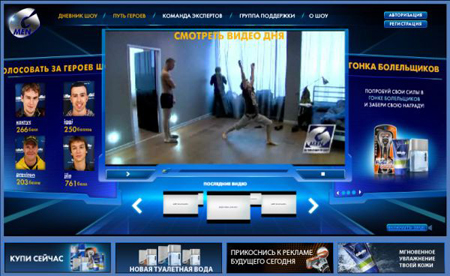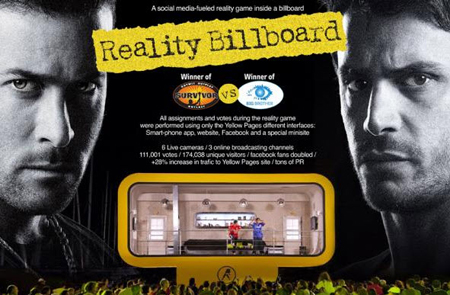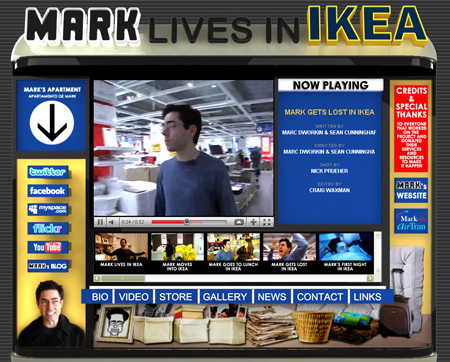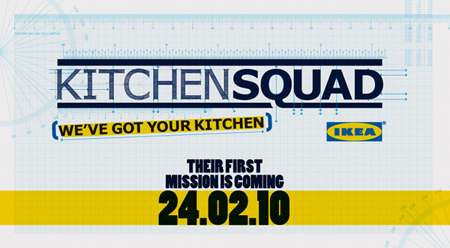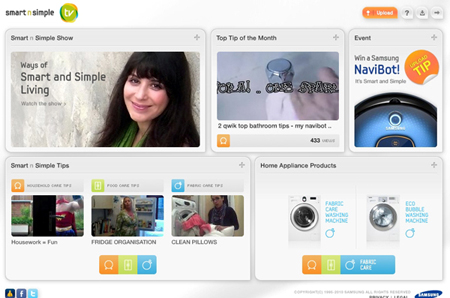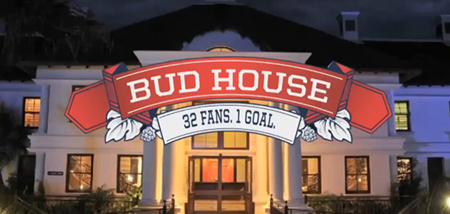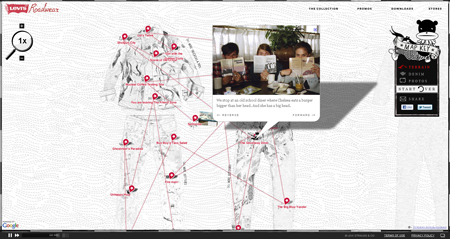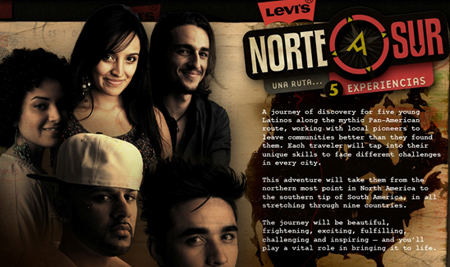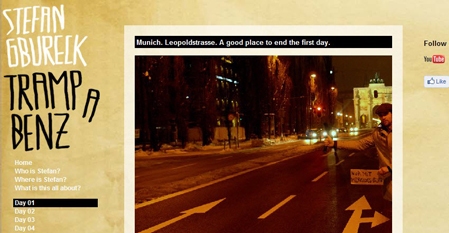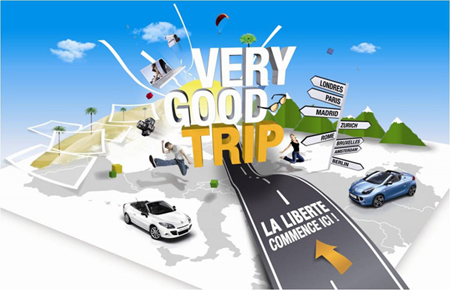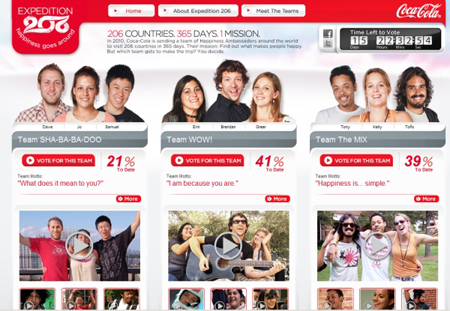Now, with AR being probably the most powerful advertising tool in the set of ‘reality’ features used for promotion, let’s look back at another, traditional ‘reality’ promotional approach, which still works perfectly. TV commercials with their made-up plots, characters and dialogues can appeal for sure, but genuine emotions of real people are much more convincing. Building on the success of extremely popular reality programs, brands launch their own initiatives of this kind to entertain and educate audience while spreading the word about the goods—some of these projects are grandiose, the others are small-scale, but this format never leaves consumers untouched.
Let’s start with the tiniest piece of ‘reality’ advertising. Procter & Gamble’s Pantene shot the world’s first reality hair ad last spring—the winner of the themed contest, Marissa Hopson, became the first Pantene’s First Reality Hair Star and was featured in an ad that was aired on May 25, 2010. The next installation by the company was much more ambitious. Gillette’s Russian project G-Men, which also a DJ, a cook, a VJ and a photographer) fighting for 33 thousand dollars. The four finalists were trying hard to demonstrate that they have become first-class professionals in their areas with the help of experts. While the grooming brand invited just one musician, Smirnoff gathered several DJs in a project titled Master of the Mix with the ultimate goal to find the hottest disco star in the world by setting the world’s most prominent DJs against each other in head-to-head competitions.
The next installation was much more ambitious. Yellow Pages, the iconic telephone directory, kicked off a bold ambient promotion in Israel last year—the brand took the winners of the two most popular reality shows in the country, ‘The Big Brother’ and ‘Survivor,’ and placed them into a giant billboard with a transparent front wall so that people around could see what was going on inside the rooms. The activity was also broadcast online, and the two guys performed their assignments using only online-channels in Yellow Pages interfaces (smart-phone application, website, Facebook and Twitter pages as well as special micro site and mobile texting). The brand spent $1 million on the project, making it one of the most expensive ad initiatives of this kind.
Procter & Gamble launched a similar activity for the promotion of the new packaging of its Downy brand, a linen softener. The company tapped American comedian Mike Birbiglia to reside in the windows of New York Macy’s store so that anyone could come and see how he lived and enjoyed his bedsheets cleaned daily with Ultra Downy April Fresh (people also could communicate with the actor via the Facebook fan page of the campaign).
Continuing the theme of people behind the glass screen, it’s just impossible to leave IKEA out of the picture. How do people behave when they wait for something important? IKEA decided to figure it out and back in 2008 launched a simple but lovely project dubbed ‘Warte bis September’ (‘Wait until September’) in Germany featuring one man in one room. For 21 days, Nils was waiting for the upcoming IKEA catalogue in a space, where two cameras were installed. Web users could see how the guy was communicating with friends and people who called him and sent messages online. This humorous project was launched soon after a similar one in the USA called ‘Mark Lives in IKEA,’ which also showcased a guy who moved to live and sleep to an IKEA store because his apartment was fumigated.
While the four projects above are all about waiting and—to put things frankly—doing nothing, the next two ones were dedicated to active actions. In IKEA Kitchen Squad and IKEA’s Inside Design, commissioned experts to change the interiors of apartments, and sometimes their owners even didn’t know anything about the upcoming renovation. In early 2010, to support the launch of its new online hub dedicated to improving kitchen spaces, the retailer commissioned a team of experts to visit two houses and change the cooking and dining zones there while the owners of the houses were out and knew nothing about the ‘remake.’
Another project of the retailer was also all about makeover, but everything was ‘official’ there—four designers were challenged with a task to create the best new stylish design for a living-room in a Manhattan loft using IKEA furniture. The designer who developed the best makeover idea of was given $5,000 (the budget for each renovation plan) to realize the concept. It wasn’t reality show in the original sense of this word combination, but the work was filmed in detail.
The theme of space management was also explored by Samsung, which launched a series of short-films featuring families that just can’t deal with the mess at home. Experts arrived to help them put everything in order and provide people with best solution to a range of ‘routine’ problems—poor time management, a habit to leave washed clothes unfolded, buy unhealthy food, etc.—so that they could spend more time with their family. In the end of each episode, the actress Ginnie Watson who fronted the episodes talked about characteristics of certain Samsung products which could help turn daily routine into enjoyable experience.
What do Pampers and Durex have in common (barring the fact that they touch on the baby theme, but from the opposite sides)? This uniting element is reality-shows, launched by the brands last year. Last summer, the iconic producer of condoms kicked off a controversial project titled ‘Virgin Diaries,’ encouraging teens and young adults to talk about ‘their first time’ and get featured in a themed documentary. For those, who didn’t use the product of the previous brand, Pampers released a series of episodes touting the theme of parenthood and features real moms and dads who share their tips on how to raise children on different stages.
When the 2010 World Cup was kicked off , Budweiser started a project dubbed ‘Bud United,’ which saw 32 people representing different countries and different teams taking part in the championship—the participants were travelling and exploring South Africa and were watching the games to see which of the team would go further. It wasn’t just about sport fan involvement and fun—according to the rules, when one of the teams left the tournament, one of the residents also had to say good-bye to the house.
Some of the brands prefer to develop reality shows ‘in motion’—Levi’s, Renault, Mercedes-Benz and Coca-Cola are among them. The jeanswear brand launched a hilarious promotion taglined ‘I was created for the road less travelled’ to highlight the brand’s devotion to freedom and its youthful spirit. The promo site of the campaign featured a ‘jeans’ map with the routes of the Mermonkey band, which were on their first-ever tour across the country. The visitors to the online hub were invited to explore the map by zooming in and out to read and watch the highlights from the guys’ trip—photos and videos—documented in a candid and open way and spiced up with light-hearted humor.
This campaign has similar features with another ‘travelling’ project by the brand, which saw five American Latinos embarking on a trip along the Pan-American Highway to see how people in different areas from Alaska to Argentina live. During the grandiose nine-city journey, the guys were also meeting local pioneers who provided inspiration and challenges to enable the cast to explore their Latino heritage.
In November 2010, Mercedes-Benz kicked off a great promotion featuring Berlin-based emerging street photographer, performance artist and an ex-Hugo Boss-model Stefan Gbureck, who had a plan to travel across Europe in the brand’s autos exclusively. The 17-day hitchhiking trip was finished in Barcelona, and each day of the journey has been thoroughly documented in the traveler’s blog.
As part of the New Mégane Coupé Cabriolet and Renault Wind promotion, Renault kicked off two lovely campaigns—one of them featured French Borate, who travelled to England to introduce some ‘joie de vivre ’ to a boring town in Lancashire and the other encouraged the brand’s fans to travel around Europe and be featured in a reality-show project. There were 16 people—8 teams with 2 participants in each representing one European country—who, accompanied by a production team filming their journey, were taking on various challenges, demonstrating their creativity and pushing back their own limits, competing for a chance to receive a brand new car from Renault.
Coca-Cola launched two campaigns, which can be characterized as shows with a reality element. The first of them, Expedition 206, started in January 2010 with an ambitious mission of visiting 206 countries where the drink is sold in 365 days. The team of three brand ambassadors explored the cultures, communicated with local people and sought out ‘what makes people happy’ around the globe, and shared their blog posts, tweets, videos, interviews and pictures with fans so they could follow the adventures almost in real time.
While the previous project took the whole year, Coca-Cola and Maroon5 music session was designed just for one day. During the 24-hour experiment, the celebrated band created a song drawing inspiration from the audience, which sent tweets, videos, photos and comments to support the musicians during the session.
From a philosophical point of view, most of us live in a reality show created by brands, and the projects above are just particular cases of this tendency.
